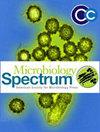CRISPR/ cas9兼容质粒支持人类真菌病原体新型隐球菌的七种优势遗传选择方法。
摘要
新型隐球菌是人类真菌性脑膜炎最常见的病因,也是研究真核生物基础的重要模型系统。这种生物的遗传操作依赖于三种主要的耐药标记(诺斯基丙氨酸乙酰转移酶[NAT]、新霉素磷酸转移酶II [NEO]和潮霉素B磷酸转移酶[HYG])和可循环利用的主要原生营养标记amdS。随着不断的技术进步,扩大了我们探索隐球菌基因功能的能力,当代研究通常需要在同一菌株中进行多次遗传操作。额外的优势选择方法将通过促进这些工具的组合使用来最大化这些工具的效用。本研究通过囊虫素S脱氨酶(BSD)或囊虫素S抗性(BSR)标记来鉴定囊虫素S抗性,作为一种新的优势选择方法。我们进一步通过博莱霉素耐药基因(BLE)标记作为额外的选择方法来验证静脉霉素耐药性,证实了25年前首次建立该标记的研究(J. Hua, J. D. Meyer, and J. K. Lodge, clinclindiagn Lab Immunol 7:25 5- 122,2000, https://doi.org/10.1128/cdli.7.1.125-128.2000)。为了实现高效的CRISPR/ cas9介导的基因组修饰,我们将这些标记以及新建立的优势原生营养标记ptxD (M. Khongthongdam, T. Phetruen, and S. Chanarat, Microbiol spectre 13:e01618- 241,2025, https://doi.org/10.1128/spectrum.01618-24)整合到一个载体系列中,通过PCR构建融合标记- sgrna产物。总的来说,这项工作将新生芽孢杆菌的优势遗传选择方法的数量扩大到7种,包括5种药物选择方法和2种原生营养方法。载体系列已在Addgene沉积。新型隐球菌是世界卫生组织优先考虑的真菌病原体,因为其分布广泛,治疗方案不足。此外,作为一种担子菌酵母,它占据了真菌王国的一个未被开发的分支,这种生物是一个强大的系统,可以破译经典模式真菌中缺失的核心真核生物生物学。确定新的隐球菌基因的功能是一个至关重要的优先事项,并且额外的遗传选择方法的可用性将促进这些努力。在这项研究中,我们建立了一种新的新形态芽孢杆菌的抗性遗传选择方法,并验证了先前关于静脉霉素抗性的报道。这项工作将可靠的优势选择方法的数量扩大到7种,为将序列遗传修饰引入单个菌株提供了灵活性。Cryptococcus neoformans is the most common cause of human fungal meningitis and an important model system for studying fundamental eukaryotic biology. Genetic manipulation of this organism relies on three dominant drug resistance markers (nourseothricin acetyltransferase [NAT], neomycin phosphotransferase II [NEO], and hygromycin B phosphotransferase [HYG]) and the recyclable dominant prototrophic marker amdS. With ongoing technological advances that are expanding our ability to explore cryptococcal gene function, contemporary studies often require multiple genetic manipulations in the same strain. Additional dominant selection methods would maximize the utility of these tools by facilitating their combinatorial use. Here, we identify blasticidin S resistance via the blasticidin S deaminase (BSD) or blasticidin S resistance (BSR) markers as a novel dominant selection method for C. neoformans. We further validate phleomycin resistance via the bleomycin resistance gene (BLE) marker as an additional selection method, confirming a study that first established this marker 25 years ago (J. Hua, J. D. Meyer, and J. K. Lodge, Clin Diagn Lab Immunol 7:125-128, 2000, https://doi.org/10.1128/cdli.7.1.125-128.2000). To enable highly efficient CRISPR/Cas9-mediated genome modification, we incorporated these markers, as well as the newly established dominant prototrophic marker ptxD (M. Khongthongdam, T. Phetruen, and S. Chanarat, Microbiol Spectr 13:e01618-24, 2025, https://doi.org/10.1128/spectrum.01618-24), into a vector series that enables the construction of fused marker-sgRNA products via PCR. Altogether, this work expands the number of dominant genetic selection methods for C. neoformans to seven, including five drug selection regimes and two prototrophic methods. The vector series has been deposited at Addgene.IMPORTANCECryptococcus neoformans is the top-ranked World Health Organization priority fungal pathogen due to its widespread distribution and inadequate treatment options. Additionally, as a basidiomycete yeast occupying an underexplored branch of the fungal kingdom, this organism is a powerful system for deciphering core eukaryotic biology that is absent in classic model fungi. Defining functions for novel cryptococcal genes is a crucial priority, and the availability of additional genetic selection methods would facilitate these efforts. In this study, we establish blasticidin S resistance as a novel genetic selection method for C. neoformans, and we validate a previous report using phleomycin resistance as such. This work expands the number of reliable dominant selection methods to seven, providing flexibility for the introduction of sequential genetic modifications into single strains.

 求助内容:
求助内容: 应助结果提醒方式:
应助结果提醒方式:


